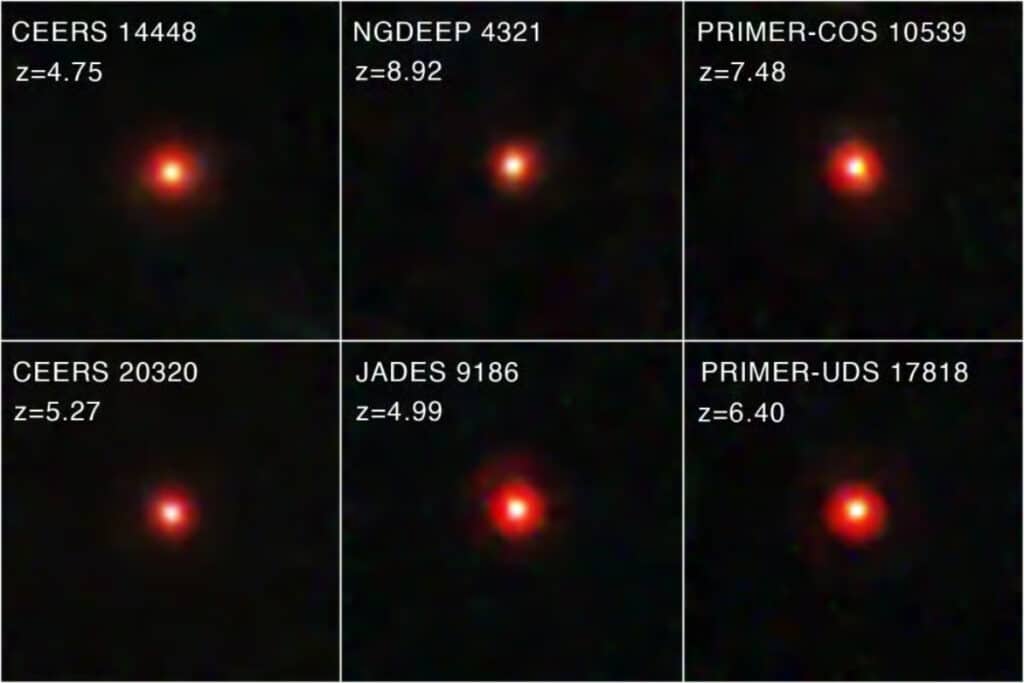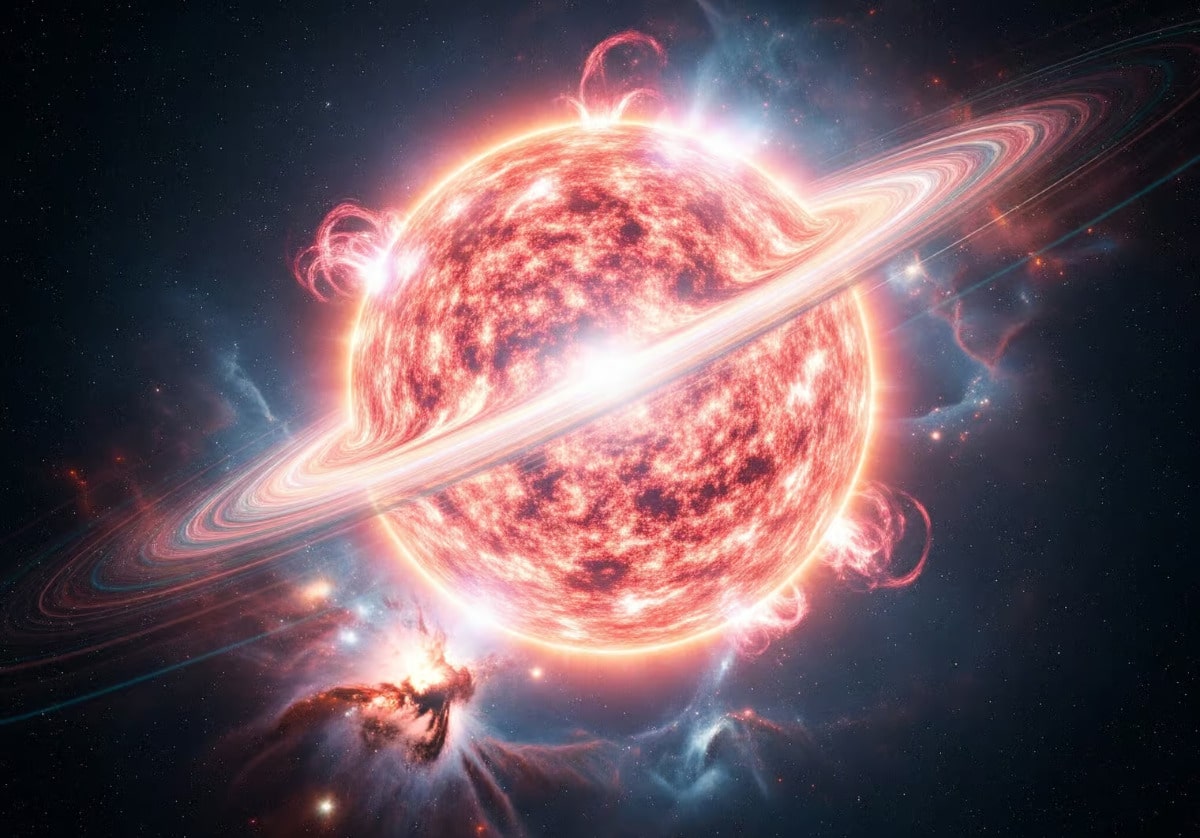Tiny red specks in Webb’s images have astrophysicists buzzing. Could these dots be the Universe’s first and most colossal stars, not distant black holes?

A team of astronomers analyzed data from multiple surveys by the James Webb Space Telescope to compile one of the largest samples of “little red dots” (LRDs) to date. The team discovered that these mysterious red objects, seemingly small in the sky, emerge in large numbers about 600 million years after the Big Bang and experience a rapid decline in number about 1.5 billion years after. Spectroscopic data from some LRDs in their sample, provided by the Red Unknowns: Bright Infrared Extragalactic Survey (RUBIES), suggest that many of them are accreting black holes. However, further studies of these intriguing objects are needed. © NASA, ESA, CSA, STScI, Dale Kocevski (Colby College)
Population III stars not black holes?
Avi Loeb and Devesh Nandal propose that the Little Red Dots are ancient primordial giants—Population III stars formed when the cosmos was young and metal free. Their computer-modeled spectra line up exactly with JWST’s infrared detections. In contrast, supermassive black holes demand X-ray flashes or flickering light from accretion, neither of which Webb sees.
More than 10 years ago, using ESO instruments, astrophysicists discovered an ancient quasar whose black hole already contained two billion solar masses. This quasar, called ULAS J1120+0641, is observed as it was only 770 million years after the Big Bang. To get a fairly accurate French translation, click on the white rectangle in the bottom right corner. English subtitles should then appear. Then click on the nut to the right of the rectangle, then on “Subtitles” and finally on “Automatically translate”. Choose “French”. © European Southern Observatory (ESO)
The supermassive star saga
The idea of gargantuan stars goes back to Hoyle and Fowler in 1963, prompting a new era of gravitational physics. As Chandrasekhar and Feynman showed, objects exceeding critical mass suffer instability, collapsing into massive black hole seeds. Those seeds then gulp down gas—especially via cold flows—and merge during galaxy collisions, eventually powering the leviathan black holes we observe today.
Did you know?
When Maarten Schmidt matched 3C 273’s visible glow to its radio signal, he found hydrogen lines shifted so far toward the red end that the object had to be outside our galaxy. That breakthrough proved quasars release incredible energy, and today we’ve catalogued over 200,000 of these cosmic lighthouses.

Laurent Sacco
Journalist
Born in Vichy in 1969, I grew up during the Apollo era, inspired by space exploration, nuclear energy, and major scientific discoveries. Early on, I developed a passion for quantum physics, relativity, and epistemology, influenced by thinkers like Russell, Popper, and Teilhard de Chardin, as well as scientists such as Paul Davies and Haroun Tazieff.
I studied particle physics at Blaise-Pascal University in Clermont-Ferrand, with a parallel interest in geosciences and paleontology, where I later worked on fossil reconstructions. Curious and multidisciplinary, I joined Futura to write about quantum theory, black holes, cosmology, and astrophysics, while continuing to explore topics like exobiology, volcanology, mathematics, and energy issues.
I’ve interviewed renowned scientists such as Françoise Combes, Abhay Ashtekar, and Aurélien Barrau, and completed advanced courses in astrophysics at the Paris and Côte d’Azur Observatories. Since 2024, I’ve served on the scientific committee of the Cosmos prize. I also remain deeply connected to the Russian and Ukrainian scientific traditions, which shaped my early academic learning.

